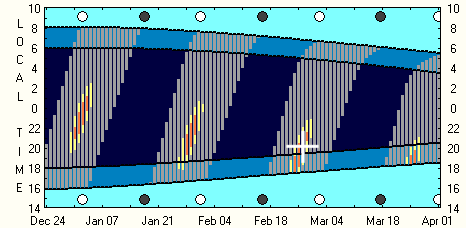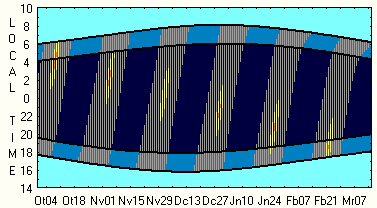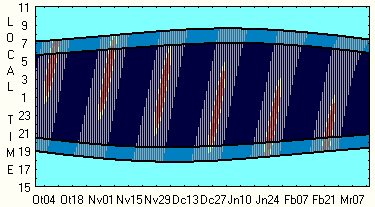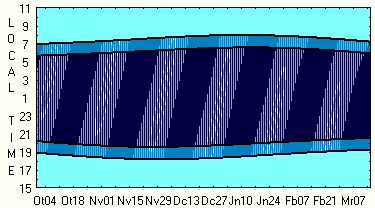|
The geometric conditions for seeing a lunar circumhorizon arc are the same as for a solar one.
The moon being a lot fainter, and not always full, greatly reduces the number of practical opportunities of course.
The visibility varies on a monthly basis rather than annual, making it harder to keep track of the best times.
There is an interesting twist for high latitude observers because the moon can get about 5 degrees further north or south than the sun, extending the limit of visibilty.
There is a catch but that is dealt with on the next page.
The diagram below shows how the visibility varied for London in 2006/2007.
Note that the best times occur in winter when the moon is furthest north.
The white cross marks the time the images on the previous page were taken.
|










